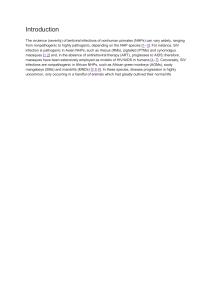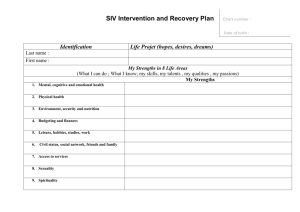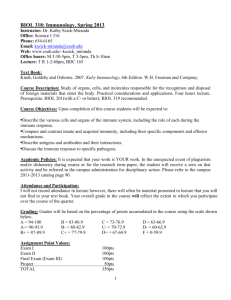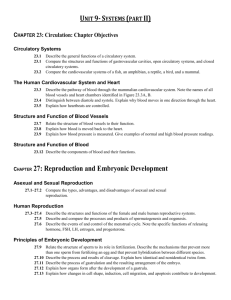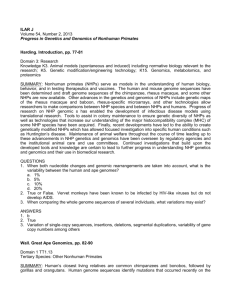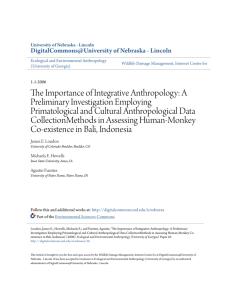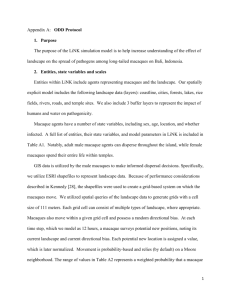DurudasAndre Abstract
advertisement
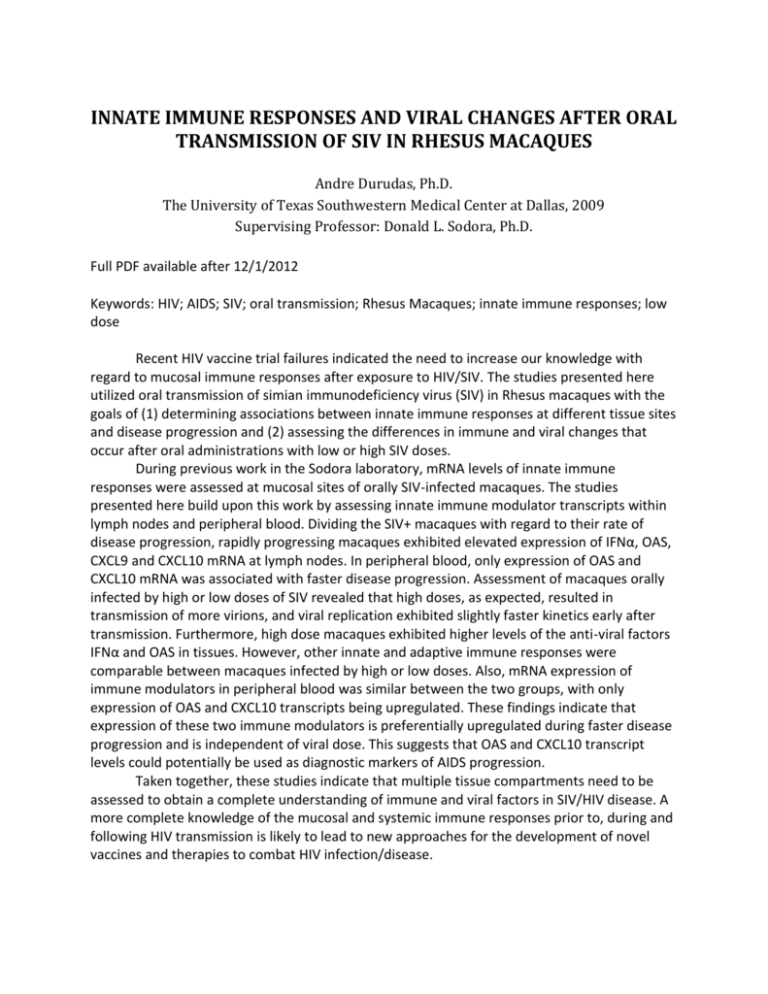
INNATE IMMUNE RESPONSES AND VIRAL CHANGES AFTER ORAL TRANSMISSION OF SIV IN RHESUS MACAQUES Andre Durudas, Ph.D. The University of Texas Southwestern Medical Center at Dallas, 2009 Supervising Professor: Donald L. Sodora, Ph.D. Full PDF available after 12/1/2012 Keywords: HIV; AIDS; SIV; oral transmission; Rhesus Macaques; innate immune responses; low dose Recent HIV vaccine trial failures indicated the need to increase our knowledge with regard to mucosal immune responses after exposure to HIV/SIV. The studies presented here utilized oral transmission of simian immunodeficiency virus (SIV) in Rhesus macaques with the goals of (1) determining associations between innate immune responses at different tissue sites and disease progression and (2) assessing the differences in immune and viral changes that occur after oral administrations with low or high SIV doses. During previous work in the Sodora laboratory, mRNA levels of innate immune responses were assessed at mucosal sites of orally SIV-infected macaques. The studies presented here build upon this work by assessing innate immune modulator transcripts within lymph nodes and peripheral blood. Dividing the SIV+ macaques with regard to their rate of disease progression, rapidly progressing macaques exhibited elevated expression of IFNα, OAS, CXCL9 and CXCL10 mRNA at lymph nodes. In peripheral blood, only expression of OAS and CXCL10 mRNA was associated with faster disease progression. Assessment of macaques orally infected by high or low doses of SIV revealed that high doses, as expected, resulted in transmission of more virions, and viral replication exhibited slightly faster kinetics early after transmission. Furthermore, high dose macaques exhibited higher levels of the anti-viral factors IFNα and OAS in tissues. However, other innate and adaptive immune responses were comparable between macaques infected by high or low doses. Also, mRNA expression of immune modulators in peripheral blood was similar between the two groups, with only expression of OAS and CXCL10 transcripts being upregulated. These findings indicate that expression of these two immune modulators is preferentially upregulated during faster disease progression and is independent of viral dose. This suggests that OAS and CXCL10 transcript levels could potentially be used as diagnostic markers of AIDS progression. Taken together, these studies indicate that multiple tissue compartments need to be assessed to obtain a complete understanding of immune and viral factors in SIV/HIV disease. A more complete knowledge of the mucosal and systemic immune responses prior to, during and following HIV transmission is likely to lead to new approaches for the development of novel vaccines and therapies to combat HIV infection/disease.
